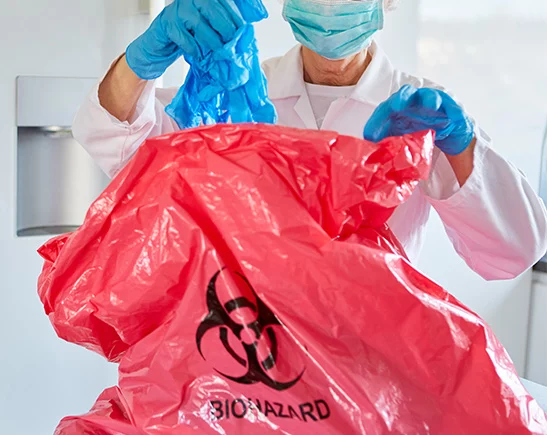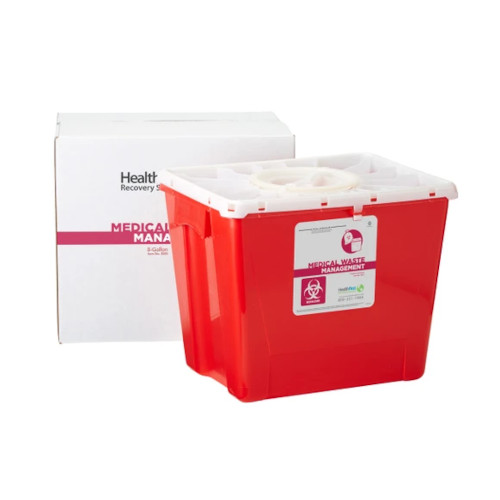Ecological Obligation: The Eco-Friendly Technique to Medical Waste Disposal
Ecological Obligation: The Eco-Friendly Technique to Medical Waste Disposal
Blog Article
Exploring Different Garbage Disposal Options for a Cleaner Setting
In the pursuit of a cleaner environment, the management of waste disposal has emerged as an important prime focus for lasting development. With a wide variety of waste disposal options offered, ranging from typical garbage dump approaches to cutting-edge waste-to-energy innovations, the selection of how we manage our waste has significant ramifications for our world's health. By checking out the numerous approaches and methods utilized in recycling, composting, incineration, land fill administration, and waste-to-energy procedures, a much deeper understanding of their impacts and performance can be gotten. The pursuit for optimal garbage disposal approaches that focus on ecological conservation while fulfilling the requirements of a growing population continues to be a pressing concern in today's globe.
Recycling Approaches
Implementing reliable recycling methods is critical in decreasing waste and promoting sustainability in our atmosphere. Recycling includes the process of converting waste materials into recyclable things to prevent unnecessary disposal.
An additional crucial recycling technique is composting, which includes breaking down organic waste like food scraps and yard trimmings into nutrient-rich dirt. By integrating these different recycling approaches right into our waste administration methods, we can considerably decrease our environmental impact and relocate towards a much more sustainable future.

Composting Strategies
Reliable waste management techniques, such as reusing techniques, lead the means for a cleaner setting, and currently, moving the focus to 'Composting Techniques', we discover lasting methods to break down natural waste for ecological benefit. medical waste disposal.
Composting is a natural procedure that changes organic waste, like food scraps and lawn trimmings, into a nutrient-rich soil modification. The key to successful composting hinges on developing the ideal balance of green products, such as fruit and veggie scraps, and brownish products, like dried twigs and leaves. These products decompose with the aid of microbes, breaking down the waste into useful compost.
There are numerous composting methods offered to match different demands. Typical yard composting entails layering natural materials in a bin or heap and routinely turning the mix to freshen it. Vermicomposting, on the various other hand, makes use of worms to break down natural matter right into garden compost (click here). For those with limited room, indoor composting systems give a practical solution. By using composting techniques, we can decrease the quantity of waste sent out to land fills while developing a beneficial product for enhancing dirt and sustaining plant development.
Incineration Pros and Cons
Incineration, as a garbage disposal technique, provides both advantages and disadvantages that merit mindful factor to consider in the realm of sustainable waste monitoring techniques. On the favorable side, incineration can significantly reduce the quantity of waste, minimizing the need for land fill room and potentially decreasing greenhouse gas emissions. Incineration likewise enables the recuperation of power via the generation of power or heat, adding to resource recuperation. Additionally, the procedure can be used to damage dangerous compounds, using a safe technique for taking care of certain sorts of waste that might present threats to public wellness and the atmosphere if left untreated.
Additionally, the high preliminary financial investment and functional prices of incineration facilities pose financial difficulties, making it a less cost-effective option contrasted to other waste management approaches. Cautious monitoring and law are important to reduce these negative influences and make the most of the benefits of incineration as part of a comprehensive waste monitoring technique.
Landfill Management Strategies
Land fills play a vital duty in waste administration and environmental preservation by supplying a containment system for the disposal of solid waste products. By compacting the waste, the quantity is lowered, enabling for even more waste to be fit over time.
Additionally, the implementation of everyday cover techniques is important in reducing smells, avoiding trash, and minimizing the attraction of pests. Covering the disposed waste at the end of daily helps to consist of smells and avoid potential environmental contamination. Furthermore, the monitoring of landfill gas emissions and leachate levels is critical in making sure that environmental criteria are met which any type of potential risks to bordering communities are lessened.

Waste-to-Energy Technologies
Among the cutting-edge strategies to waste management involves harnessing Waste-to-Energy innovations to convert solid waste into usable energy resources. Waste-to-Energy (WtE) innovations include a series of processes that aim to draw out energy from waste materials through thermal, chemical, or biological means. This conversion process not only decreases the quantity of waste that winds up in landfills however additionally produces useful power resources such as electrical power, heat, or biofuels.
There are numerous approaches of Waste-to-Energy conversion, including incineration, gasification, and pyrolysis. Incineration entails shedding waste at high temperatures to produce warm and electrical power. Gasification converts waste right into a syngas, which can be utilized for power generation or chemical production. Pyrolysis breaks down natural materials using high temperatures in the lack of oxygen, creating bio-oil, gas, and char.
Applying Waste-to-Energy innovations can help mitigate ecological concerns connected with standard waste disposal methods while simultaneously giving a sustainable energy resource. However, mindful consideration must be offered to emissions control and guaranteeing the sustainability of feedstock products for these technologies to be absolutely useful for a cleaner setting.
.jpg)
Conclusion
To conclude, exploring various garbage disposal choices such as recycling, composting, incineration, land fill administration, and waste-to-energy innovations is crucial for promoting a cleaner environment - click here. Each technique has its very own advantages and challenges, however by making use of a combination of these techniques, we can function in the direction of minimizing the quantity of waste that winds up in landfills and eventually add to a much more lasting future for generations ahead
With a multitude of waste disposal options offered, ranging from standard land fill approaches to innovative waste-to-energy technologies, the option of exactly how we handle our waste has significant ramifications for our world's health. medical waste disposal.Incineration, as a waste disposal approach, offers both benefits and negative aspects that warrant cautious factor to consider in the world of sustainable waste administration methods.Garbage dumps play a critical duty in waste monitoring and ecological preservation by providing a control system for the disposal of solid great site waste products. By condensing the waste, the volume is decreased, allowing for more waste to be accommodated over time
One of the innovative strategies to squander management includes utilizing Waste-to-Energy technologies to transform solid waste into useful power sources.
Report this page